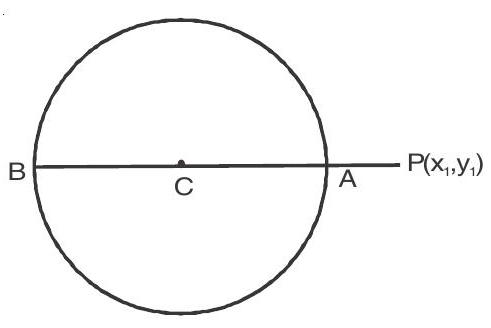CIRCLE-2 (Position of a Point)
1. Position of a point with respect to a circle .
let the circle is
Point
(or)

2. Maximum and minimum distance of a point from the circle
Let the circle
The maximum and minimum distance form

Examples
1. If the equation
(a) 3, 1
(b) 2, 2
(c) 2, 3
(d) 3, 4
Show Answer
Solution :
represents a circle if
Correct option is :(c)
2. The number if integral values of
(a) 20
(b) 16
(c) 18
(d) 24
Show Answer
Solution :
radius of the equation
number of values of
3. The equation of the circle which passes through
(a)
(b)
(c)
(d)
Show Answer
Solution :
The radius will be minimum, if the given points are the end points of a diameter. Then the equation of the circle is
4. The centre of the circle
(a)
(b)
(c)
(d) None of these
Show Answer
Solution :
Rewrite the given equation
squaring and adding










